600年の歴史を持ち、国内外を問わず多くの料理人が絶対の信頼を寄せる堺包丁。
その伝統を守り、堺孝行ブランドとして包丁を製造する青木刃物製作所。
今回、堺孝行の包丁を製造をされている堺鍛冶士 土井逸夫さんの鍛造作業の撮影に伺って参りました。
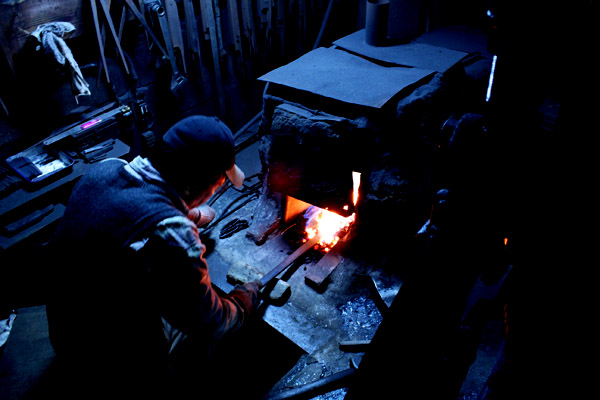 (写真:工場作業風景)
(写真:工場作業風景)
作業を行う工場内は灯りが付いておらず暗闇。
鍛造の工程では、繊細を求められる温度管理が必要ですが
温度計はなく、鍛冶士が炉の炎、熱せられた鉄の色を見て判断し、作業を進めて行きます。
経験に裏打ちされた職人の勘、まさに匠の技です。
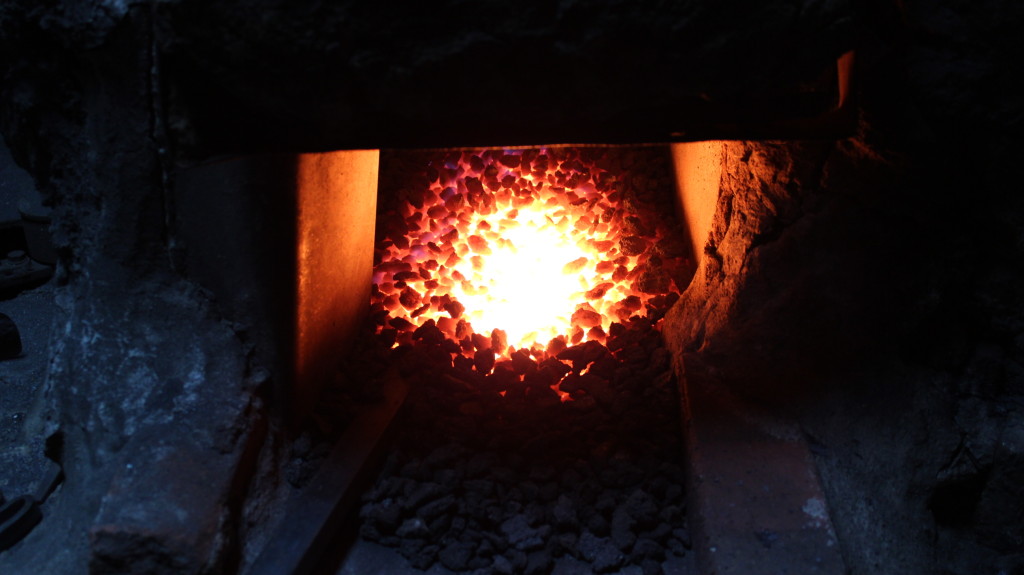 (写真:炉)
(写真:炉)
900℃に達する炉を前にしながら作業を続けます。
特別に炉の前の作業場に入らせて頂けました、近づくと顔が焼けるように暑いです。
(動画:鍛接)
地金(軟鉄)と固い刃金(ハガネ)を接合します。熱した地金の上に接合材をふりかけ、鋼をのせた後、何度も叩き、熱することで接合していきます。固いハガネが刃の部分、軟鉄が刃を支えることで、切れ味鋭く、丈夫な包丁のベースが作れれていきます。
(動画:鍛造)
鍛接したかたまりを、炉の中で熱し上げたところをハンマーで叩いて包丁の形に仕上げていきます。上下に動く機械式のスプリングハンマーと手動のハンマーを適切に使い分けながら叩いていきます。
包丁の鋭さは硬さにあり、刃持ちの長さは、粘りにあります。この相反する特性を両立する包丁が優れた包丁で、土井さんは、この「叩く」という工程を伝統の技を駆使し、何度も何度も繰り返すことによって包丁に粘りと硬さが備えていきます。
粘り硬さによって、鋭い切れ味だけではない包丁の研ぎ易さ、長く切れ味を保つ優れた包丁となっていくのです。
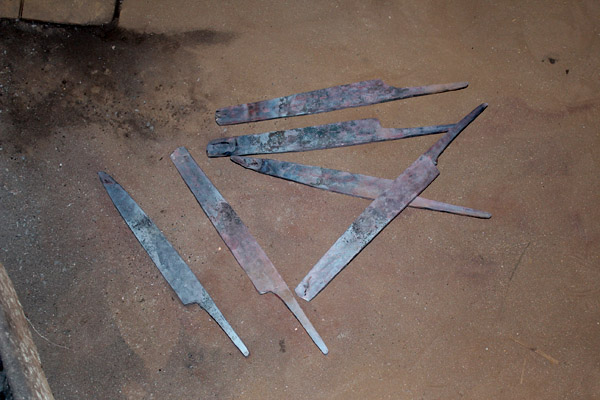 (写真:鍛造後)
(写真:鍛造後)
包丁の原型が出来上がりました。
堺孝行では、峰(包丁の背の部分)から刃先にかけて最適な角度を付けることにこだわることで、鋭い切れ味を実現しています。この後、様々な工程を得て、完成品へと仕上げられていきます。
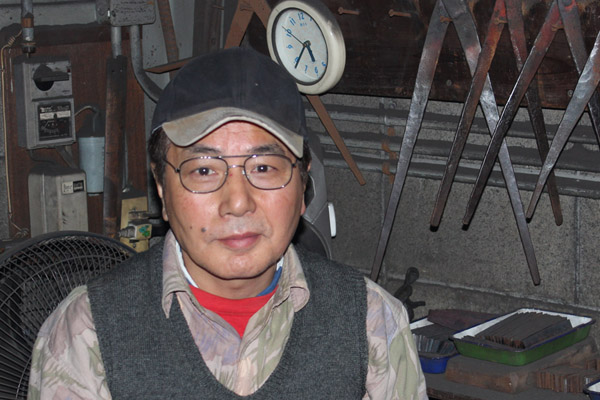 (写真:堺鍛冶士 土井逸夫さん)
(写真:堺鍛冶士 土井逸夫さん)
土井逸夫さん 1948年生まれ
24歳で父土井敬次郎氏に弟子入りし
祖父より続く、土井家秘伝の技法を習得され、堺鍛冶士として良質な包丁を作り続けていらっしゃいます。
幼い頃、毎日鍛冶の仕事で真っ黒に汚れた格好になっている父を見て育った土井さんは、将来は綺麗な職場で仕事をしようと、一時は会社勤めをされたようですが、やはり包丁作り魅せられ鍛冶士の道を選んだそうです。
工場はコークスや炭の灰が舞う為、クーラーはすぐに壊れてしまうそうで、冷房機器はなく、真夏は地獄のような暑さだとか。厳しい仕事ではあるようですが、様々な技術を伝承した今、高いレベルを追求するお客様の為に、仕事が出来ることが何よりも楽しくやりがいがあると語って頂きました。
土井さんの撮影後、、研ぎ作業の様子や包丁作りの最終工程である柄付けについても、撮影させて頂きましたのでご覧下さい。
(動画:研ぎあげ)
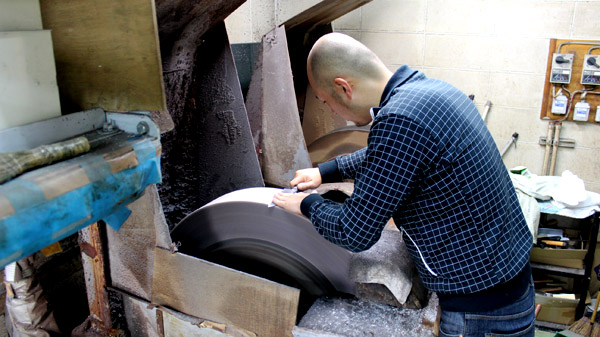 荒研ぎ、本研ぎ様々な箇所を研ぎあげ、刃を付けることで、包丁に仕上げていきます。
荒研ぎ、本研ぎ様々な箇所を研ぎあげ、刃を付けることで、包丁に仕上げていきます。
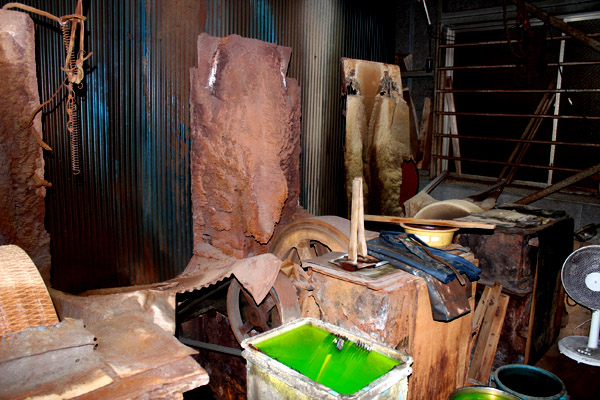 (写真:研ぎ場)
(写真:研ぎ場)
研ぐ作業によって前面に飛び散った砥石、刃の粉でしょうか
まるで鍾乳石のような形をしたものが出来上がっていました。
(動画:柄付け)
包丁の接合部分をガスバーナーで熱し、木の柄の穴へ差し込みます。木槌で柄の底を叩くと、包丁が柄の中へ入っていきます。
木の収縮によって強固に固定されます。
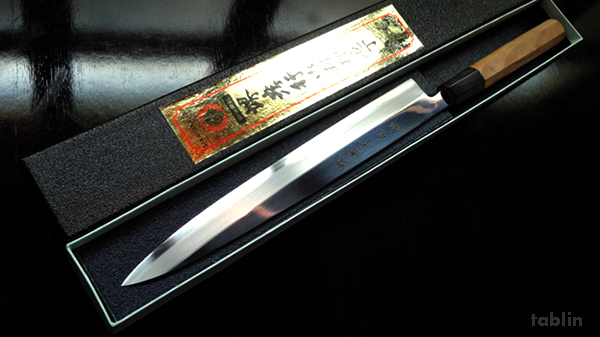
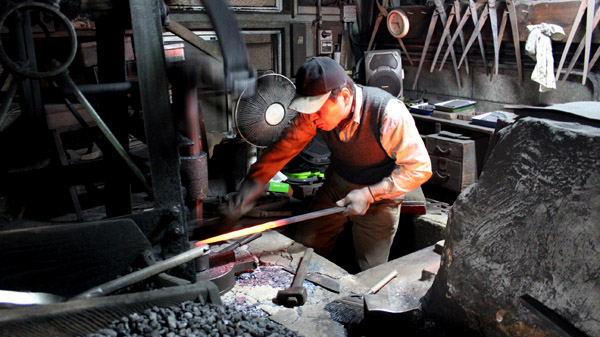 一本の包丁がひとつひとつ
一本の包丁がひとつひとつ
様々な工程、鍛冶師、研ぎ師など複数の職人の手によってに作られています。
伝統の技術に加え、職人の一本に込める情熱と鍛錬が、優れた包丁として高い評価を得続けるているのです。
一人前の鍛冶師、研ぎ師になるには数十年という長い年月を要することや、日本国内における刃物のマーケットが縮小していった背景などから、次の担い手となる後継者育成の課題があるとのことですが、世界に誇れる包丁として、伝統の技術を守り抜いて頂きたいです。
堺孝行刃物 株式会社青木刃物製作所
Web site: http://www.aoki-hamono.co.jp
代々受け継がれきた伝統の技を駆使し
丹念に鍛え上げれた世界最高の切れ味を誇る 和包丁 堺孝行
堺鍛冶士 土井逸夫さん 鍛造動画のご紹介
– 2013/12/09Posted in: traditional craft